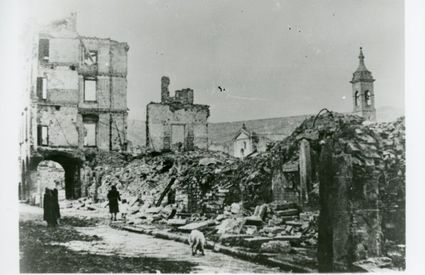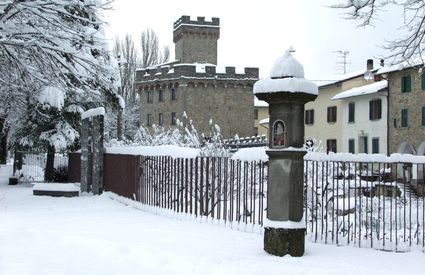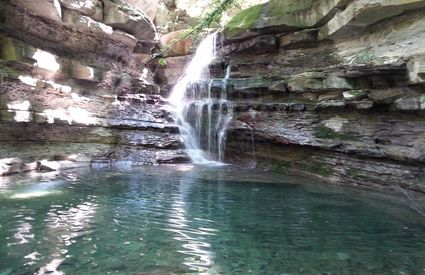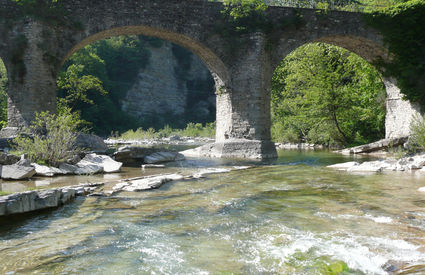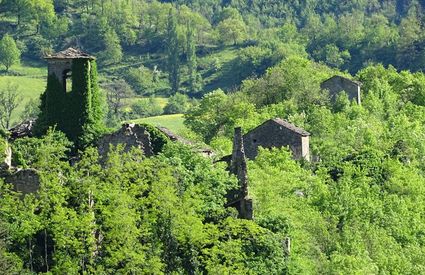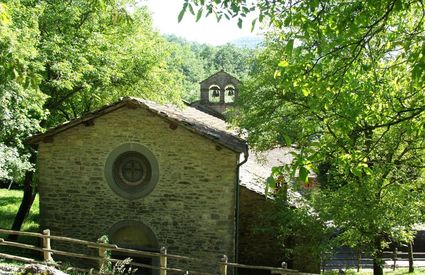Firenzuola
The land in between
Known as Terra di Mezzo (the land in between), Firenzuola has been a stopover for travellers transiting between Florence and Bologna for centuries.
The land in between
Known as Terra di Mezzo (the land in between), Firenzuola has been a stopover for travellers transiting between Florence and Bologna for centuries.
A great history
Firenzuola’s roots are very old, dating back to when the Roman Republic built the Flaminia Minor road, laying down part of the track (still viable today) at the Passo della Futa to connect Bononia and Arretium. Given the strategic location of the high valley of the Santerno, the first stone at Firenzuola was laid on April 9, 1332, by the Republic of Florence to defend its borders and at the same time provide an outpost in Romagna. During the 1400s, Antonio da San Gallo, one of the best architects of the Renaissance, renovated the fortifications to meet the new military technologies. A strong earthquake in the middle of the 1600s destroyed the Nova Civitas Fiorentina. At the same time, the area was hit by a serious outbreak of the plague. It is said that during the earthquake, a young nun, Sister Diomira Allegri, went to top of a hill and prayed that Firenzuola be spared from the earthquake. There is a local saying: "Firenzuola will be shaken, but never beaten." In 1944, Firenzuola was placed - once again - at a strategic point of the Gothic Line and was almost completely destroyed by Allied bombing. Reconstruction began soon after the war and was carried out along the exact scope of the original civitas, but with modern architecture, which, alongside the ancient Renaissance doors and the mighty fortress, futuristic buildings like the Chiesa di S. Giovanni Battista and the Casa del Popolo create a contrast of materials and strident yet harmonious forms.
A wild Florence
Located in the high valley of the Eternal River (Santerno) Firenzuola remains isolated from the rest of the world, offering stunning views of landscapes ranging from the Pietra Serena quarries, much loved by the Brunelleschi, to the blue waters of the Rovigo river. A harsh territory of hard ground and barren hills, which, at times echoing the distant Arcadia, were the land of wizards. Inside the valley, Nature rules with impassable roads, uncultivated fields and magical glades kept secret by imposing chestnut groves or impenetrable pine forests. Only now and then, in the distance, can you hear the muffled explosions of mines at the quarry, punctuated by the tolling of the Romanesque churches and the Abbazia di Moscheta.
Ghost town
In the valley, cars pass, the street is a party and motorcycles whiz towards the Passi del Giogo and della Futa… but the vast surrounding territory hides a forgotten reality: the Ghost Towns set in the mountain. For almost half a century, old villages have lain in total silence. Engulfed by almost impenetrable vegetation and forgotten by men, hiding ancient treasures like the village of Brento Sanico or "“Brento la Volpe”, whose ruined chapel reveals, under crumbling walls, ancient 16th century frescos; or Castiglioncello Borgo, a ghost town that only the most adventurous dare to approach.


